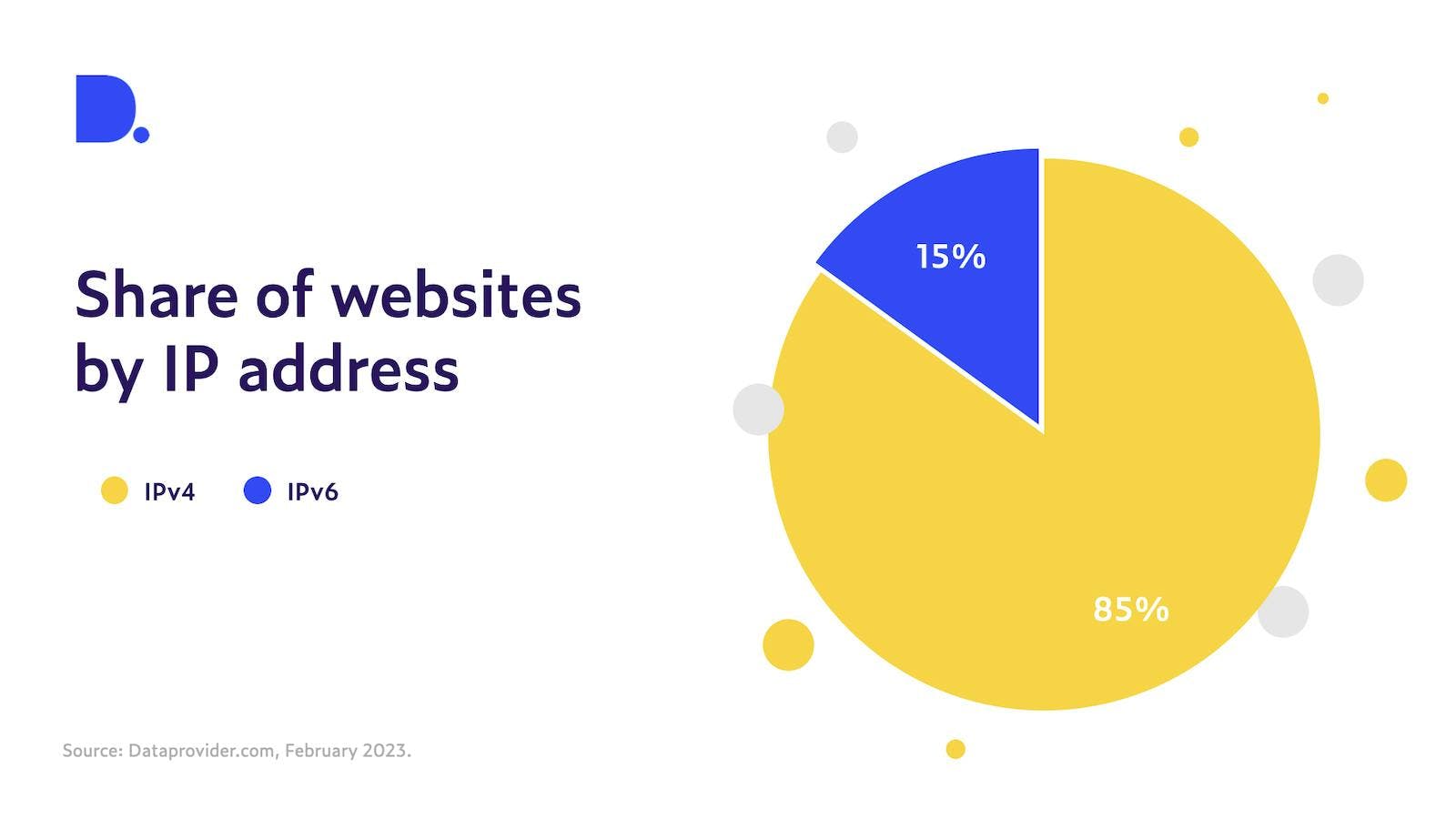Internet Basics #7: A beginner’s guide to IP addresses
- about 2 years ago
- 4 min read
An Internet Protocol (IP) address is a unique code on the internet linked to a computer or computer network. This unique code grants the device to send and receive information.
In the 1960s, the first ever networking protocol was made by the United States Department of Defense’s Advanced Research Project Agency (DARPA). It was called ARPHANET. ARPHANET was created in order to make it easier to share long distance information without needing a dedicated phone connection that linked a computer with a network. It started as a basic system that assigned each computer to a unique hostname.
Afterward, as the internet became more and more popular, this basic system wasn’t enough anymore. Therefore, the Internet Protocol (IP) was implemented in the 1980s. The Internet Protocol is in control of choosing the route of data packets between devices connected to the internet. It makes use of the information from the data packet — including the IP address of the sender and the recipient — to bring the packet to the intended device. The packet will be sent from device to device until it’s received by the device of the recipient. The IP and IP addresses have to work together to ensure that the data is forwarded correctly and reaches the right destination.
IP addresses are also used by servers that host domains, that means domains can be accessed not only by typing the domain name but also by writing the dedicated IP address into a browser. IPv4 is the first version of IP addresses and has 32-bit numbers consisting of four numbers divided by full stops. This is called an octet (e.g., 109.106.241.165). The range of the numbers in an octet is from 0 to 255. Some companies can be identified by their IPv4 address. For example, the IP of Google’s public DNS service is 8.8.8.8, and Quad9, another large DNS provider, has 9.9.9.9, as the very name suggests.
In total, there are over four billion different addresses in IPv4. These are, however, not enough for all internet users, which is why IPv6 was implemented. IPv5 was made, but never used. According to our data, IPv4 addresses account for 85% of all IP addresses, but IPv6 is gaining popularity and has grown by around 3% in the last two years.
The biggest difference between the two is the length of the addresses. IPv6 is a 128-bit hexadecimal address made of 8 parts containing 16 bits separated by a colon (e.g., 2a02:2350:5:10b:3f:3117:ab70:a002). All hexadecimal characters represent four bits, which need to be changed into a hexadecimal number at a time. There is a possibility to have one device with both IPv4 and IPv6 running in parallel. This is called dual stacking. Tunnelling allows IPv6 users to communicate with an IPv4 network to get to IPv6. Network Address Translation (NAT) makes it possible for multiple internal devices with different internal IP addresses to access a host in a different network through a single (public) IP address. The NAT takes care of the mapping between these networks, which means that it associates a particular IP address with a specific device or location within the network.

IP addresses can be categorized into public, private, static and dynamic. A public IP is used outside a network, while a private one is used inside a network. A static IP is always manually made and can’t be changed. On the other hand, the dynamic address does change since it’s set by a Dynamic Host Configuration Protocol (DHCP). The dynamic IP addresses expire over time, but will be given automatically a new lease, or replaced by a new one.
IP addresses are the foundation of the internet, therefore, it is important to have a clear view on the topic.
How to find your IP address?
Your publicly known IP address can be found by asking Google ‘’What is my IP Address?’’ If you are looking for your internal IP address, you should click ‘Start > Settings > Network & Internet’ on your Windows computer. On macOS, you go to ‘Menu > System Preferences > Network > Choose your network connection.’ With an Ethernet or USB connection, your internal IP will be shown, and with a Wi-Fi connection you can find the internal IP address under connection status.
How to hide your IP address?
For security reasons, you might want to hide your IP address. You can do this by using a proxy server or Virtual Private Network (VPN). A proxy server makes sure that servers, search engines and other companies can’t see your IP address — they see the IP address of the proxy server instead.
A proxy server is mostly used as a protective layer against hackers to hide an IP address and to be anonymous on the web. Unfortunately, there are some downsides to using a proxy server: the server might still save private information, such as passwords and usernames. For this reason, you shouldn’t sign into private accounts while using a proxy server, or you should use one that is highly secured.
A VPN hides your data traffic and safeguards it from other parties. When connecting your device to a VPN before using the internet, your device will be shown under the IP address of the VPN. Via a secured connection, your internet traffic will be sent to the websites you are visiting. A VPN is commonly used to secure data and the IP address. Next to that it is used to secure websites and access content that can’t otherwise be accessed due to geographic reasons.
IP addresses are important for communication on the internet. They give the possibility to recognize the devices connected to a network and send and receive information over the internet. IP addresses are the foundation of the internet, therefore, it is important to have a clear view on the topic.